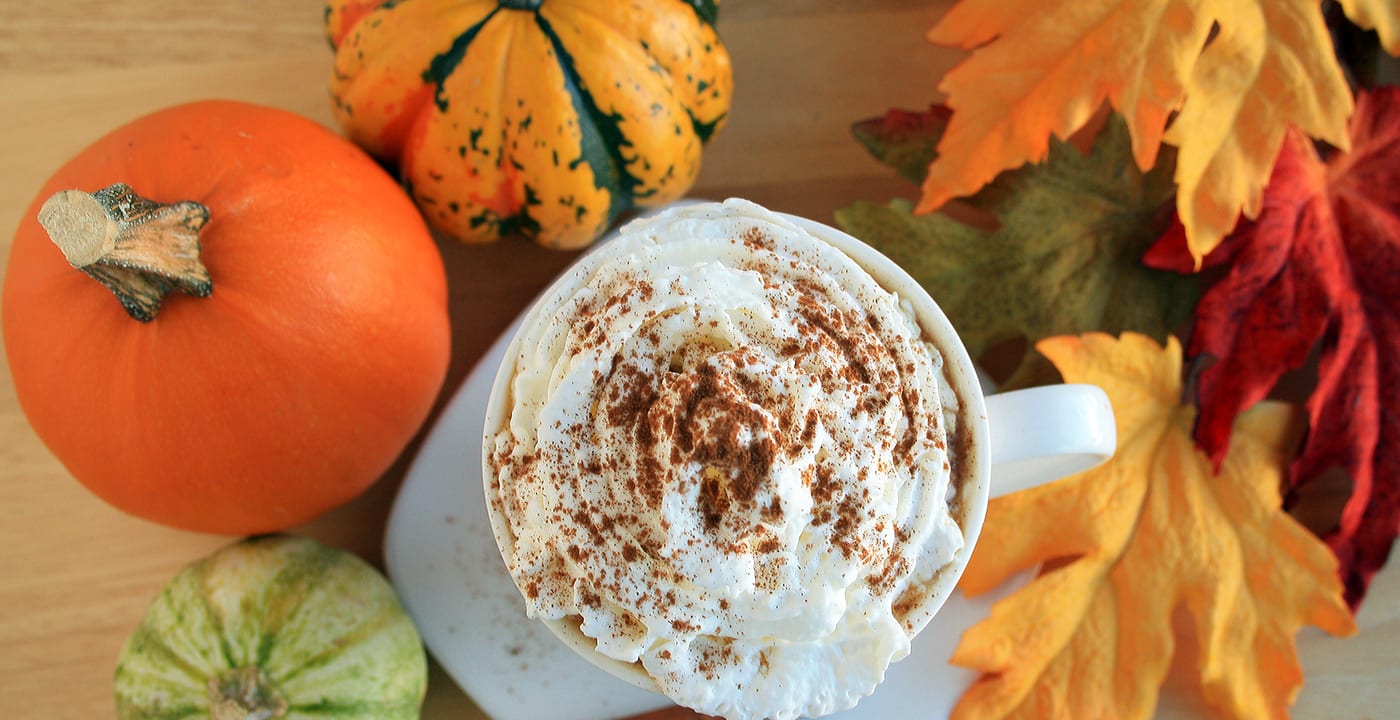Pumpkin, pumpkin, everywhere: Find healthy options amid the #PSL craze

By Brittney Lott
Fall is here, which marks the return of the pumpkin spice latte — and all things pumpkin. Over the years, the amount of pumpkin spice products has greatly increased, giving people plenty of options for feeding their pumpkin cravings.
But how do we enjoy the sweet treats that come with the fall season while also sticking to our healthy eating goals?
We spoke to Erica Lewis, RD, CD, a wellness dietitian with the MultiCare Center for Healthy Living, to find out how we can get our pumpkin spice fix and still make healthy choices this fall.
Pumpkin in its natural form is a great addition to any healthy diet, Lewis says. Pumpkin pulp is an excellent source of vitamin A and fiber — one cup has about 7 grams of fiber, or about 25 percent of the daily recommended intake of fiber.
Vitamin A is important for overall growth and development, overall eye health, and it helps boost our immune system, which is more important than ever as we transition from fall to winter.
Fiber is what keeps us full longer and helps us maintain a healthy gastrointestinal tract, which reduces our risk for certain conditions, such as diverticulosis.
A quick, on-the-go snack that Lewis recommends all fall long? Pumpkin seeds.
“Pumpkin seeds are a wonderful, healthy, go-to snack that are a great source of fiber, healthy fat, protein and magnesium,” she says.
Magnesium is a mineral essential for metabolic functioning and healthy muscle and nerve function. It works with calcium to maintain bone health.
Roast pumpkin seeds and make a colorful fall trail mix with dried cranberries, pretzel sticks, and mini dark chocolate chips, Lewis suggests.
It’s important to read the labels on all foods we buy, but there are specific things to look for when buying pumpkin products. Lewis recommends limiting food products that list pumpkin as a “flavor,” “sauce” or “syrup,” and to focus on buying foods that have pumpkin in its natural form — generally listed as “pumpkin,” “pumpkin puree” or “pumpkin flakes.”
It can be hard to resist a pumpkin spice latte this time of year, but flavored coffee drinks can be deceivingly high in calories. Lewis has a few tips to help make your latte lighter.
“For a healthier version, ask for 1 percent milk instead of whole milk or experiment with almond milk,” she says. “Skip the whipped cream and go light on the pumpkin spice syrup. I can never get enough of cinnamon or nutmeg, so I always ask for a little extra on top for a more robust flavor.”
While we often see pumpkin used in sweet treats, Lewis loves to incorporate pumpkin into savory dishes as well.
“Pumpkin is a very versatile ingredient,” she says. “Experiment by replacing oil, butter or other fruit purees like banana or sweet potato with 100 percent pumpkin puree when you are cooking or baking.”
Add 1/4 cup to 1/2 cup pumpkin puree to your sloppy joes instead of the tomato sauce or ketchup your regular recipe asks for.
Try pumpkin ravioli or roast two pumpkin halves in your oven (stems, seeds and fibrous strands removed) with some olive oil and spices of your preference.
Pumpkin spice mix
1/4 cup ground cinnamon
2 Tbsp ground ginger
1 tsp ground cloves
2 tsp ground nutmeg
1 tsp allspice.
Use to spice up traditional sweet treats, or add to any recipe calling for pumpkin spice mix as directed.
Pumpkin spice overnight oats
1/2 cup plain oatmeal
1/4 cup plain pumpkin puree
1/2 tsp pumpkin pie spice mix
2 Tbsp finely chopped walnuts
1/2 cup milk (or milk alternative)
Mix oatmeal, pumpkin puree, spices, 1 Tbsp walnuts and milk in mason jar. Put in fridge for 2-3 hours or overnight. Just before serving, sprinkle the remaining 1 Tbsp of chopped walnuts on the top for a little added crunch.



